SMALL KID PLAYING WITH CUTE FLUFFY CAT
Playing with a cute and fluffy cat can be a wonderful experience for a small child. Here are some tips to ensure that the interaction is enjoyable and safe for both the child and the cat:
1. **Supervision:** Always have an adult present to supervise the interaction between the child and the cat. This helps prevent any accidental rough handling or behavior that might startle the cat.
2. **Gentle Approach:** Teach the child to approach the cat slowly and gently. Sudden movements might scare the cat.
3. **Respect the Cat's Space:** Explain to the child that cats have their own personal space. Let the cat come to the child at its own pace, rather than trying to pick it up immediately.
4. **Noisy Play:** While it's okay for the child to play around the cat, loud noises and sudden movements might stress the cat. Teach the child to be mindful of the cat's reactions.
5. **Petting:** Show the child how to pet the cat gently and calmly. Cats usually enjoy being petted on their back, behind the ears, or along their chin. Avoid touching sensitive areas like their belly, as some cats don't like this.
6. **Body Language:** Educate the child about cat body language. Explain that a relaxed cat might purr, while a cat that's swishing its tail or flattening its ears might be agitated.
7. **Toys:** Provide age-appropriate toys for the child to interact with the cat. Feather wands, soft balls, or string toys can engage the cat's natural hunting instincts and keep both the child and the cat entertained.
8. **No Rough Play:** Teach the child not to pull the cat's fur, ears, or tail. Cats have sensitive areas that can cause discomfort or stress if handled roughly.
9. **Avoid Chasing:** Make sure the child knows not to chase the cat around. This can make the cat feel cornered or anxious.
10. **Positive Reinforcement:** Encourage the child to use positive reinforcement by offering treats or praise when the cat displays good behavior during playtime.
11. **Breaks:** Cats can become overstimulated, so it's important to teach the child to recognize when the cat needs a break. If the cat walks away or shows signs of irritation, it's time to give the cat space.
12. **Hygiene:** Teach the child the importance of washing hands after playing with the cat. This helps prevent the spread of germs.
13. **Safe Environment:** Create a safe environment for the cat and child to interact. Remove any hazardous objects or substances that could be harmful to either party.
14. **Respect the Cat's Wishes:** If the cat is not in the mood to play or interact, respect its wishes. Cats have different personalities and moods, and it's essential to let them have their own space when needed.
By teaching the child to approach the cat with respect, gentleness, and sensitivity to the cat's signals, you can foster a positive and enjoyable relationship between the child and the cute, fluffy cat.
-
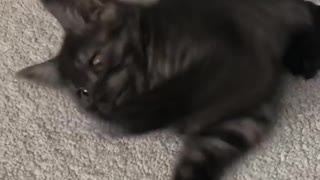 0:27
0:27
Funnycatvideo
5 years agosmall Cat playing
101 -
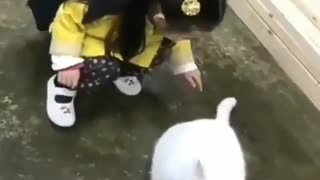 0:34
0:34
Funnycatvideo
5 years agoLittle Kid playing with Her Cat's Tail
51 -
 0:49
0:49
Rudolph the Red-Nosed Cat
1 year agoCute Little Cat Plays With His Toys
3 -
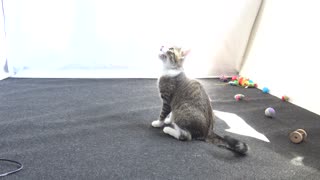 0:57
0:57
Rudolph the Red-Nosed Cat
1 year agoEnergetic Little Cat Plays with Toy
1 -
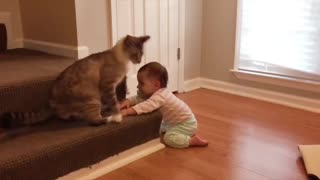 0:06
0:06
funnyanimals7777
2 years agoBaby is playing and cheering with his cat
20 -
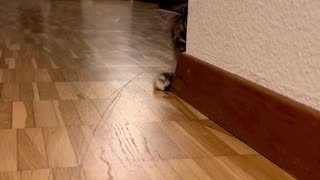 0:18
0:18
KavehRumble
1 year agoPlay with the little cat...🐈
10 -
 1:06
1:06
Rudolph the Red-Nosed Cat
1 year agoFunny Little Cat Loves Playing
3 -
 0:14
0:14
Funnycatvideo
5 years ago $0.12 earnedLittle Kitten Playing
1541 -
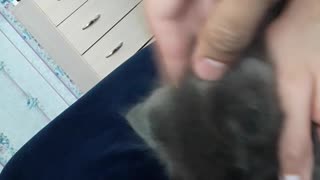 0:22
0:22
Dartonejan
3 years agoLittle cat play
501 -
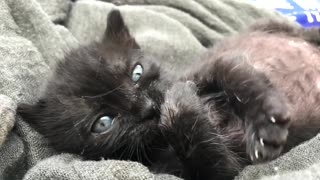 0:17
0:17
freshbox
6 years agoCat Kitten Young Playing Cute Feline Fur Small
2.57K1